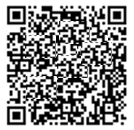[1] 于海娟, 赵梅, 王佳月, 等. 肺结核患者结核分枝杆菌耐药情况及耐多药结核病的危险因素[J]. 中国感染控制杂志, 2020, 19(1):58-62.
[2] WORLD HEALTH ORGANIZATION.Global Tuberculosis Report 2024 [EB/OL](2024-10-27)[2025-01-02]. https://www.who.int/teams/global-programme-on-tuberculosis-and-lung-health/tb-reports/global-tuberculosis-report-2024 .
[3] PANG Y, AN J, SHU W, et al.Epidemiology of Extra pulmonary Tuberculosis among Inpatients, China, 2008-2017[J]. Emerg Infect Dis, 2019, 25(3):457-464.
[4] 任运华. 50例结核性多浆膜腔积液分析[J].吉林医学, 2012, 33(1):75.
[5] 陈广道, 赛丁•艾则孜. Xpert结核分枝杆菌/利福平试验对儿童活动性结核病的诊断价值及影响因素[J]. 实用医学杂志, 2023, 39(19):2440-2445.
[6] 刘玉梅, 王栋. WBC、CRP、SAA、PCT和ESR在肺结核与社区获得性肺炎鉴别诊断中的应用[J]. 标记免疫分析与临床, 2023, 30(9):1527-1530,1570.
[7] 中华人民共和国国家卫生和计划生育委员会. 肺结核诊断标准(WS 288—2017)[J/CD]. 新发传染病电子杂志, 2018, 3(1):59-61.
[8] ROSS JM, XIE YQ, WANG YQ, et al.Estimating the population at high risk for tuberculosis through household exposure in high-incidence countries: a model-based analysis[J]. EClinical Medicine, 2021, 42:101206
[9] YAGI M, SHINDO Y, MUTOH Y, et al.Factors associated with adverse drug reactions or death in very elderly hospitalized patients with pulmonary tuberculosis[J]. Sci Rep, 2023, 13(1): 6826.
[10] UFIMTSEVA EG, EREMEEVA NI.Drug-Tolerant Mycobacterium tuberculosis Adopt Different Survival Strategies in Alveolar Macrophages of Patients with Pulmonary Tuberculosis[J].Int J Mol Sci, 2023, 24(19): 14942.
[11] 谢惠安, 阳国太, 林善梓. 现代结核病学 [M]. 北京:人民卫生出版社, 2000, 105-107.
[12] 王维娜, 刘雪婷, 梁月勉. 浆膜腔积液中SMARCA4缺失胸部未分化肿瘤的细胞病理学特点[J]. 中华病理学杂志, 2024, 53(2):143-148.
[13] SCHULMAN H, NIWARD K, ABATE E, et al.Sedimentation rate and suPAR in relation to disease activity and mortality in patients with tuberculosis[J]. Int J Tuberc Lung Dis, 2019, 23(11): 1155-1161.
[14] LI H, SONG D, LIU QH, et al.miR-351 promotes atherosclerosis in diabetes by inhibiting the ITGB3/PIK3R1/Akt pathway and induces endothelial cell injury and lipid accumulation[J]. Mol Med, 2022, 28(1): 120.
[15] 杨园园, 王子云, 周忠. ESR、hs-CRP、IL-6、D-D对结核性多浆膜腔积液患者预后评估的价值[J]. 天津医药, 2023, 51(6):628-632.
[16] LU Q, LIU J, YU Y, et al.ALB, HP, OAF and RBP4 as novel protein biomarkers for identifying cured patients with pulmonary tuberculosis by DIA[J]. Clinica Chimica Acta, 2022, 535: 82-91.
[17] 沈甜, 朱慧明, 田华, 等. 外周血降钙素原、C反应蛋白、纤维蛋白原、D-二聚体水平对肺结核合并细菌性肺炎的早期诊断价值[J]. 中国热带医学, 2023, 23(7):730-735.
[18] AMBROSETTI M, FERRARESE M, CODECASA LR, et al.Incidence of venous thromboembolism in tuberculosis patients[J]. Respiration, 2006, 73(3):396.
[19] KONSTANTINIDES SV, MEYER G, BECATTINI C, et al.2019 ESC guidelines for the diagnosis and management of acute pulmonary embolism developed in collaboration with the European Respiratory Society (ERS)[J]. Eur Heart J, 2020, 41(4): 543-603.
[20] ZHOU C, GUANG YJ, LUO YM.et al.Superior Predictive Value of D-Dimer to the Padua Prediction Score for Venous Thromboembolism in Inpatients with AECOPD: A Multicenter Cohort Study[J]. Int J Chron Obstruct Pulmon Dis, 2022, 17:2711-2722.
[21] NAN GY, FEI H, ZHEN W, et al.Risk factors associated with venous thromboembolism in tuberculosis: A case control study[J]. Clin Respir J, 2022,16(12): 835-841.
[22] MUEFONG CN, SUTHERLAND JS.Neutrophils in tuberculosisassociated inflammation and lung pathology[J]. Front Immunol, 2020, 11:962
[23] YOON NB, SON C, UM SJ.Role of the neutrophil-lymphocyte count ratio in the differential diagnosis between pulmonary tuberculosis and bacterial community-acquired pneumonia[J]. Ann Lab Med, 2013 ,33(2):105-110. |



